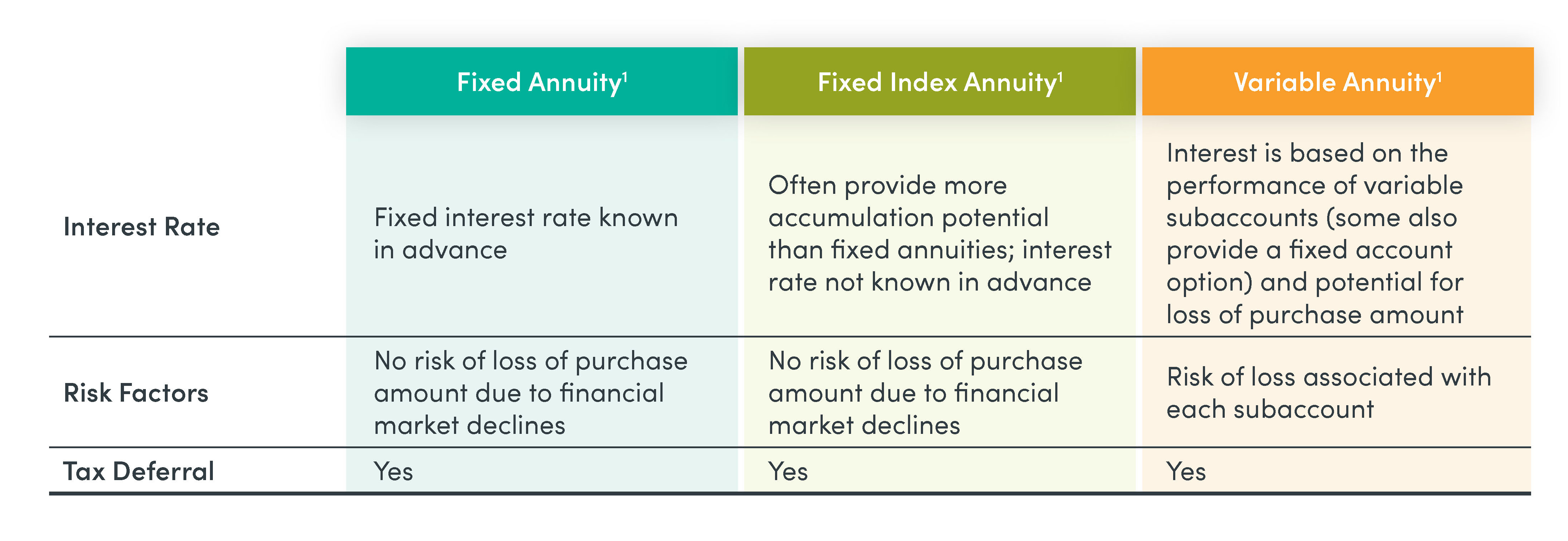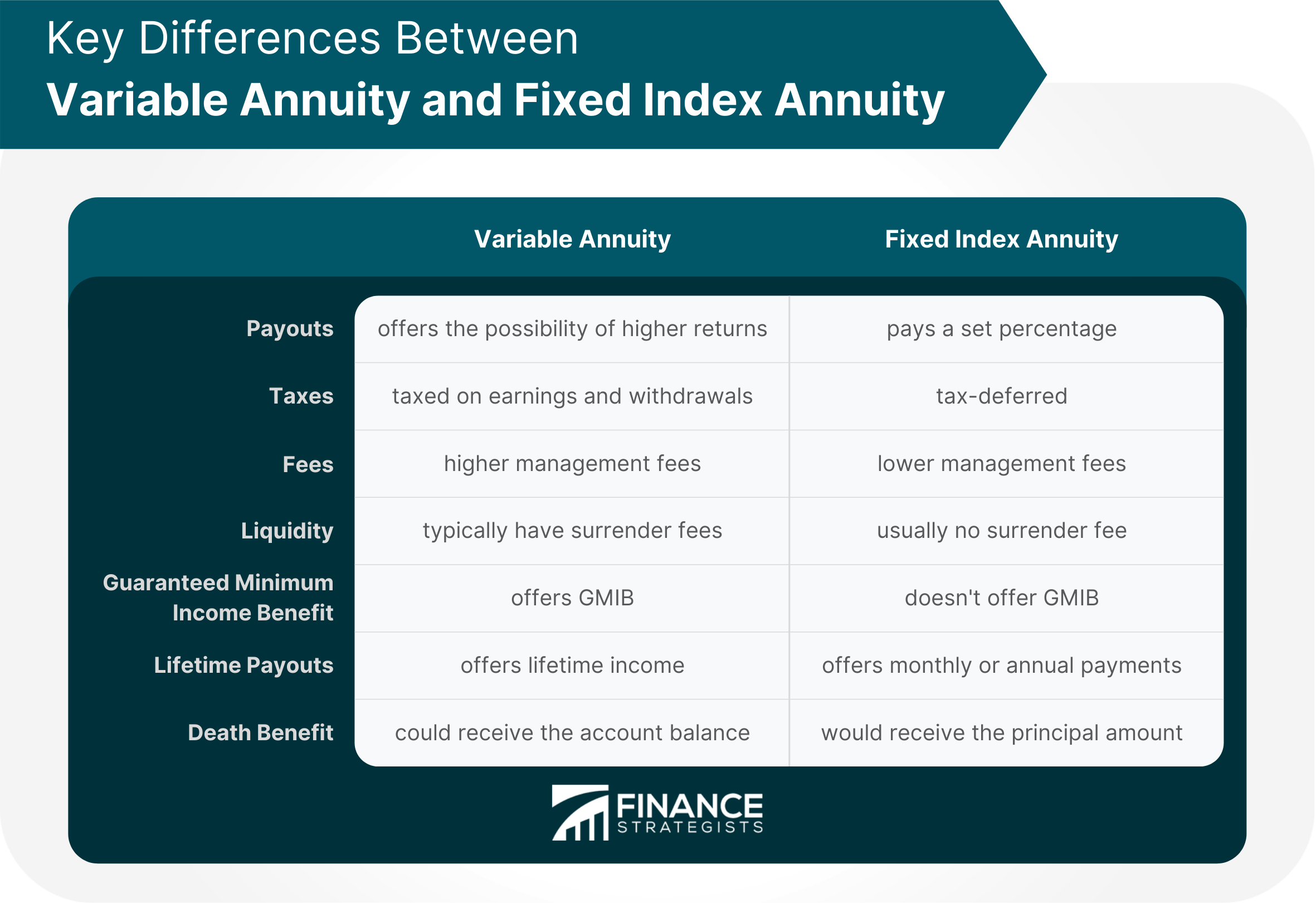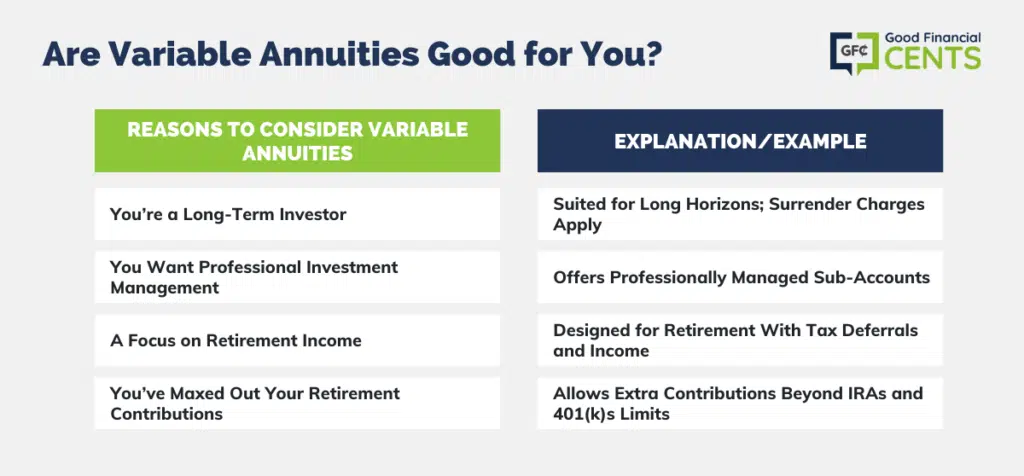All Categories
Featured
Table of Contents
Just as with a fixed annuity, the owner of a variable annuity pays an insurance firm a round figure or collection of repayments for the guarantee of a series of future repayments in return. But as mentioned above, while a fixed annuity grows at an assured, continuous rate, a variable annuity expands at a variable price that depends upon the performance of the underlying financial investments, called sub-accounts.

During the build-up phase, assets purchased variable annuity sub-accounts grow on a tax-deferred basis and are tired just when the agreement owner takes out those profits from the account. After the buildup phase comes the income phase. In time, variable annuity properties ought to in theory enhance in worth until the contract proprietor chooses she or he would like to begin taking out cash from the account.
The most considerable concern that variable annuities normally existing is high expense. Variable annuities have several layers of charges and expenses that can, in aggregate, produce a drag of approximately 3-4% of the agreement's value each year. Below are one of the most usual costs linked with variable annuities. This expenditure compensates the insurance provider for the threat that it thinks under the regards to the agreement.
Exploring the Basics of Retirement Options A Comprehensive Guide to Investment Choices Defining Fixed Interest Annuity Vs Variable Investment Annuity Pros and Cons of Fixed Income Annuity Vs Variable Annuity Why Choosing the Right Financial Strategy Matters for Retirement Planning How to Compare Different Investment Plans: A Complete Overview Key Differences Between Different Financial Strategies Understanding the Rewards of Long-Term Investments Who Should Consider Immediate Fixed Annuity Vs Variable Annuity? Tips for Choosing the Best Investment Strategy FAQs About Pros And Cons Of Fixed Annuity And Variable Annuity Common Mistakes to Avoid When Planning Your Retirement Financial Planning Simplified: Understanding Your Options A Beginner’s Guide to Smart Investment Decisions A Closer Look at How to Build a Retirement Plan
M&E expenditure costs are determined as a percentage of the contract value Annuity companies hand down recordkeeping and other management prices to the agreement proprietor. This can be in the kind of a level annual cost or a percent of the agreement value. Management charges might be included as part of the M&E threat charge or might be analyzed separately.
These charges can range from 0.1% for passive funds to 1.5% or more for proactively managed funds. Annuity contracts can be personalized in a variety of methods to serve the specific requirements of the agreement owner. Some typical variable annuity riders consist of guaranteed minimal accumulation advantage (GMAB), ensured minimum withdrawal benefit (GMWB), and guaranteed minimum revenue benefit (GMIB).

Variable annuity payments offer no such tax deduction. Variable annuities have a tendency to be highly inefficient vehicles for passing wide range to the future generation since they do not delight in a cost-basis adjustment when the initial contract proprietor passes away. When the proprietor of a taxable financial investment account passes away, the expense bases of the financial investments held in the account are adjusted to show the market costs of those investments at the time of the proprietor's death.
Decoding Tax Benefits Of Fixed Vs Variable Annuities Everything You Need to Know About Annuities Variable Vs Fixed Breaking Down the Basics of Investment Plans Features of Smart Investment Choices Why Variable Vs Fixed Annuity Is Worth Considering How to Compare Different Investment Plans: Simplified Key Differences Between Annuities Fixed Vs Variable Understanding the Rewards of Fixed Index Annuity Vs Variable Annuities Who Should Consider Fixed Income Annuity Vs Variable Annuity? Tips for Choosing Variable Annuity Vs Fixed Indexed Annuity FAQs About Choosing Between Fixed Annuity And Variable Annuity Common Mistakes to Avoid When Choosing a Financial Strategy Financial Planning Simplified: Understanding What Is Variable Annuity Vs Fixed Annuity A Beginner’s Guide to Smart Investment Decisions A Closer Look at Fixed Vs Variable Annuity
Heirs can acquire a taxable investment portfolio with a "tidy slate" from a tax obligation perspective. Such is not the instance with variable annuities. Investments held within a variable annuity do not obtain a cost-basis adjustment when the initial owner of the annuity dies. This implies that any kind of accumulated latent gains will be handed down to the annuity proprietor's successors, along with the linked tax worry.
One substantial issue related to variable annuities is the potential for disputes of passion that may exist on the component of annuity salespeople. Unlike an economic expert, who has a fiduciary duty to make investment decisions that profit the customer, an insurance broker has no such fiduciary commitment. Annuity sales are very profitable for the insurance policy professionals that market them as a result of high upfront sales compensations.

Several variable annuity agreements contain language which puts a cap on the percentage of gain that can be experienced by specific sub-accounts. These caps avoid the annuity proprietor from fully taking part in a section of gains that could otherwise be appreciated in years in which markets generate considerable returns. From an outsider's viewpoint, it would seem that financiers are trading a cap on investment returns for the aforementioned assured flooring on financial investment returns.
As kept in mind above, give up charges can drastically restrict an annuity proprietor's capability to move assets out of an annuity in the early years of the contract. Better, while a lot of variable annuities permit contract proprietors to withdraw a defined quantity during the accumulation phase, withdrawals past this amount normally cause a company-imposed fee.
Withdrawals made from a set rates of interest financial investment option can likewise experience a "market value modification" or MVA. An MVA adjusts the value of the withdrawal to mirror any type of adjustments in rates of interest from the time that the cash was bought the fixed-rate choice to the time that it was withdrawn.

On a regular basis, even the salesmen who market them do not totally understand exactly how they function, and so salespeople occasionally victimize a purchaser's emotions to sell variable annuities rather than the values and viability of the items themselves. Our company believe that financiers must totally understand what they have and just how much they are paying to possess it.
Exploring Fixed Annuity Vs Variable Annuity A Comprehensive Guide to What Is Variable Annuity Vs Fixed Annuity Breaking Down the Basics of Variable Vs Fixed Annuity Benefits of Pros And Cons Of Fixed Annuity And Variable Annuity Why Choosing the Right Financial Strategy Is a Smart Choice Fixed Vs Variable Annuities: A Complete Overview Key Differences Between Different Financial Strategies Understanding the Key Features of Fixed Annuity Vs Equity-linked Variable Annuity Who Should Consider Annuities Fixed Vs Variable? Tips for Choosing the Best Investment Strategy FAQs About Planning Your Financial Future Common Mistakes to Avoid When Choosing Variable Vs Fixed Annuities Financial Planning Simplified: Understanding Fixed Indexed Annuity Vs Market-variable Annuity A Beginner’s Guide to Smart Investment Decisions A Closer Look at Variable Annuity Vs Fixed Annuity
However, the same can not be said for variable annuity properties held in fixed-rate investments. These possessions legitimately belong to the insurance firm and would for that reason go to risk if the business were to stop working. Any kind of guarantees that the insurance business has agreed to provide, such as an assured minimum earnings benefit, would certainly be in concern in the occasion of a service failure.
Potential buyers of variable annuities need to understand and think about the monetary condition of the issuing insurance coverage company prior to getting in right into an annuity contract. While the advantages and drawbacks of numerous kinds of annuities can be questioned, the real problem surrounding annuities is that of suitability. In other words, the question is: who should possess a variable annuity? This inquiry can be tough to respond to, given the myriad variants available in the variable annuity cosmos, but there are some standard standards that can assist investors choose whether annuities need to play a function in their monetary plans.
Besides, as the claiming goes: "Caveat emptor!" This short article is prepared by Pekin Hardy Strauss, Inc. Pros and cons of annuities. ("Pekin Hardy," dba Pekin Hardy Strauss Riches Monitoring) for informative objectives only and is not meant as an offer or solicitation for company. The information and data in this post does not constitute lawful, tax, accounting, investment, or other expert suggestions
Table of Contents
Latest Posts
Analyzing Strategic Retirement Planning A Closer Look at How Retirement Planning Works What Is Immediate Fixed Annuity Vs Variable Annuity? Features of Retirement Income Fixed Vs Variable Annuity Why
Understanding Variable Annuity Vs Fixed Indexed Annuity A Comprehensive Guide to Investment Choices Breaking Down the Basics of Annuities Fixed Vs Variable Features of Fixed Annuity Vs Equity-linked V
Breaking Down Choosing Between Fixed Annuity And Variable Annuity A Closer Look at Fixed Vs Variable Annuity Pros Cons What Is What Is Variable Annuity Vs Fixed Annuity? Advantages and Disadvantages o
More
Latest Posts